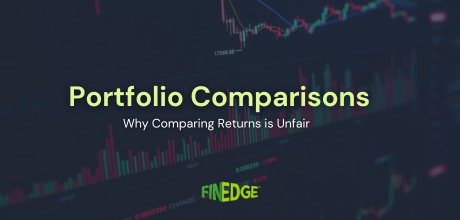How Indexation Works in Debt Mutual Funds

Debt mutual funds, especially when held for more than three years, are not only a great low-risk alternative to fixed deposits but also offer significant tax advantages. By leveraging indexation, you can reduce your taxable profits, making debt funds a smart choice for long-term investors looking to maximize after-tax returns.
The popular “Mutual Funds Sahi Hai” campaign has spurred unprecedented levels of interest in debt oriented mutual funds over the past couple of years. Anecdotal evidence suggests that even staunch fixed deposit aficionados have begun considering debt mutual funds as a viable low risk alternative. While it’s a fact that debt funds have the potential for delivering higher absolute returns that fixed deposits, did you know that they are more tax efficient in the long run as well? Indeed - if you hold your debt fund units for more than three years, you can reap the benefits of “indexation”.
How Indexation Works
Simply put, indexation reduces your ‘taxable’ profit booked when you sell your debt fund investments after a minimum of 3 years (although there’s no lock-in period involved). Every year, the income tax department of the Government of India releases a number called the “Cost Inflation Index”. Recently, the “base year” for this index was revised from 1980 to 2001. For the fiscal year 2018-19, the number stood at 280. It’s quite simple, really – when you redeem your debt mutual funds after three years, the income tax department allows you to adjust the purchase price of your units by the change in Cost Inflation Index in the time period between the year of purchase and the year of sale. By “increasing” the purchase price, your “indexed” profit reduces – and so does your tax liability!
An Example
Let’s illustrate indexation with a simple example. Shyam invests Rs. 100,000 in a debt fund on 1st May 2015 and redeems Rs. 136,000 in July 2018. Since he’s held on to his units for more than three years, indexation will apply.
From the IT department website, Shyam learns that the Cost Inflation Index was 254 in the fiscal year 2016-17 (his year of purchase) and 280 in 2018-19 (his year of sale). That is, the index has grown by 10.23% in this time period.
What Shyam can now do it “index” his purchase price by 10.23% - that is, consider his buying cost to be Rs. 110,230. This would bring down his taxable profit from Rs. 36,000 to Rs. 25,770. Moreover, he would be required to pay a tax of 20% on this indexed profit. This works out to Rs. 5,154 (14.3% of the booked profit). Had Shyam earned this profit from a fixed deposit, he would have had to pay more than Rs. 12,000 in taxes (assuming he’s in the highest marginal tax bracket). In this manner, debt mutual funds can be very tax efficient for holding periods exceeding 3 years, and for individuals who are in the highest tax bracket.
Your Investing Experts
Relevant Articles
Regular Savings Plan: A Balanced Approach to Stability and Growth
Not every investment in a portfolio is meant to maximise returns. Some are meant to preserve capital, manage volatility, and provide predictability. A regular savings plan serves exactly this role. It is designed for investors who want a more measured approach where stability takes priority, and growth plays a supporting role rather than the lead.
From Coffee to Crorepati: Small Lifestyle Tweaks Gen Z Can Make to Start Investing Early
Gen Z is often told to “stop buying coffee” if they want to invest. But that misses the point. Building wealth isn’t about sacrificing everything you enjoy. It’s about understanding how small, everyday decisions shape long-term habits. Starting early even with modest amounts can quietly make a meaningful difference over time.
Why Comparing Investment Returns Can Be Misleading
At some point, most investors have compared their investment returns with a friend, a colleague, or a number they saw online and wondered why their outcomes looked different. While this instinct is natural, return comparisons are often incomplete and, in many cases, misleading. Understanding why returns differ is far more important than comparing the numbers themselves.
.png)

.png)
